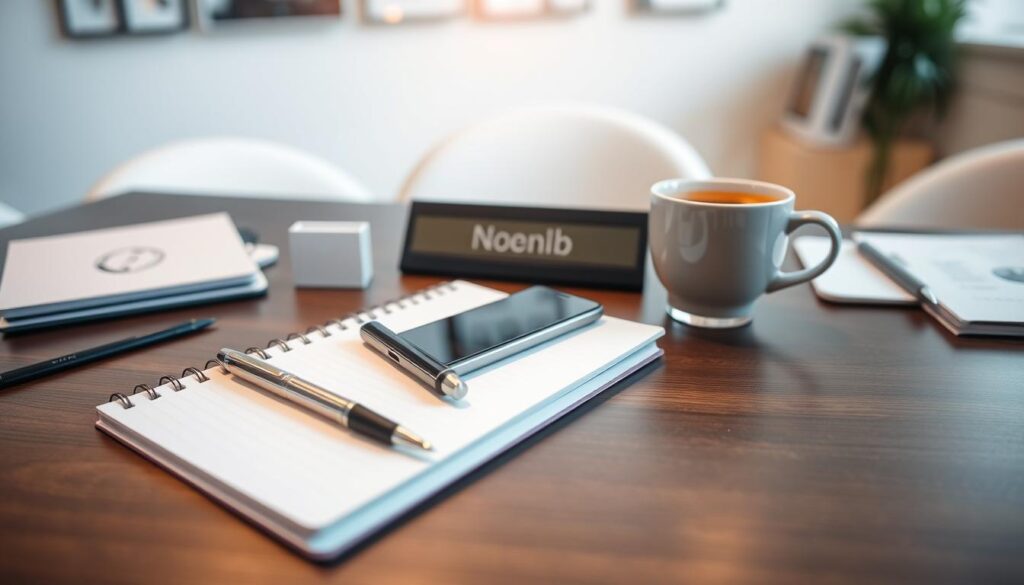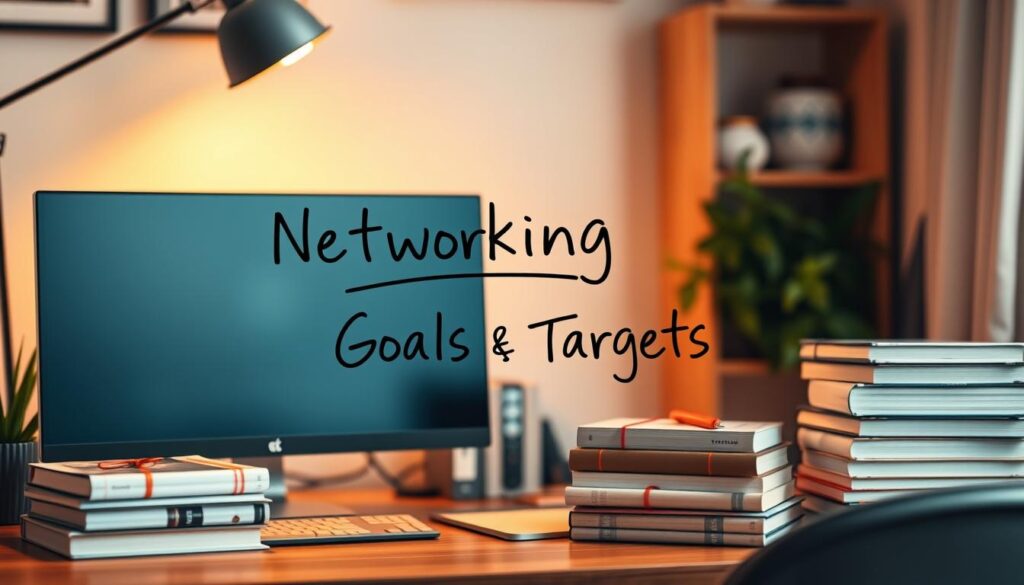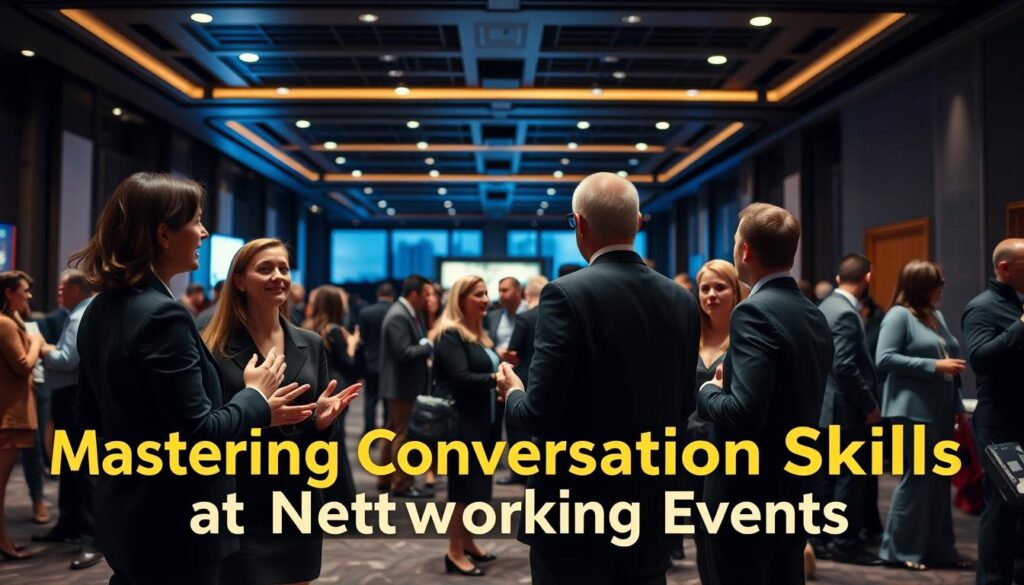Tips for Networking Effectively: Expert Advice
Did you know professional networks lost nearly 1 in 6 connections during the pandemic? As virtual interactions replaced handshakes, many saw their career support systems weaken just when they needed them most.
In today’s hybrid work environment, authentic professional relationships fuel career growth and business development. Research shows 85% of jobs are filled through networking, while 78% of startups credit connections for their early success.
This guide reveals proven methods to create meaningful business relationships that last. You’ll discover how to turn brief conversations into valuable partnerships and position yourself as someone others want to support.
Key Takeaways
- Genuine connections outperform transactional networking by 3:1 in long-term value
- Strategic relationship-building can accelerate career advancement by 40%
- 80% of professionals consider networking essential for industry relevance
- Hybrid environments require updated approaches to maintain connections
- Consistent follow-ups increase opportunity conversion rates by 65%
Why Effective Networking Matters
Strong professional relationships act as career accelerators in today’s interconnected business world. Nearly 70% of professionals report landing roles through referrals, while 83% of entrepreneurs credit collaborative partnerships for their growth. These connections create a web of support that opens doors traditional applications can’t.
Career Growth and Business Opportunities
Your professional circle often influences career trajectories more than technical skills alone. Industry leaders frequently share unadvertised job openings with trusted contacts first. A diverse network also sparks innovative ideas – 58% of professionals solve work challenges faster by tapping their connections.
Business relationships built through consistent engagement often lead to:
- Client referrals that shorten sales cycles
- Mentorship opportunities accelerating skill development
- Collaborative projects combining complementary expertise
Networking in Today’s Dynamic Environment
Hybrid work models demand updated strategies. Professionals now blend in-person conferences with virtual coffee chats to maintain connections. This dual approach keeps you visible across multiple channels while adapting to changing industry trends.
| Aspect | Traditional Networking | Modern Networking |
|---|---|---|
| Reach | Local connections | Global opportunities |
| Speed | Weeks to connect | Real-time interactions |
| Tools | Business cards | LinkedIn + virtual events |
Regular knowledge-sharing through professional communities helps anticipate market shifts. Those who network strategically gain early insights about emerging technologies and workplace changes, positioning themselves as adaptable leaders.
Essential Preparation for Your Next Networking Event

Your next networking event could be a goldmine of opportunities, but only if you’re properly equipped. Strategic groundwork separates memorable connections from forgotten encounters. Start by assembling your toolkit at least three days before the event.
Gathering Materials and Polishing Your Image
Pack more business cards than you think you’ll need – 25% of professionals run out mid-event. Use a dedicated cardholder to keep yours crisp and accessible. For hosted events, prepare branded materials that tell your story at a glance.
Align your physical appearance with your digital presence. If your LinkedIn headshot shows a sharp blazer, wear similar attire. This visual consistency helps contacts recognize you across platforms.
| Essential Item | Traditional Approach | Modern Solution |
|---|---|---|
| Contact Sharing | Paper business cards | LinkedIn QR codes |
| Note-Taking | Physical notepad | Voice memo app |
| Follow-Up | Email drafts | CRM templates |
Rehearsing Your Elevator Pitch
Craft a 20-second introduction that answers: “What unique value do I offer?” Practice varying lengths – sometimes you’ll only get 10 seconds. Record yourself to spot verbal tics like “um” or rushed pacing.
Research three key attendees beforehand. Knowing their recent projects helps create instant rapport. One prepared question about their work often sparks deeper conversations than generic small talk.
Set specific targets like exchanging eight business cards or having two meaningful discussions. These goals keep you focused without feeling overwhelmed. Remember – quality connections beat quantity every time.
Setting Goals and Targets for Networking Success

Successful networkers approach events with a game plan, not just goodwill. Clear objectives turn casual chats into career-building moments. Imagine walking into a room knowing exactly who to meet and what to achieve – that’s the power of strategic targeting.
Defining Clear Objectives
Start by asking: “What outcome matters most?” Job seekers might aim for three hiring manager introductions. Entrepreneurs often target potential investors. Your focus determines who you approach and how.
| Goal Type | Target Contacts | Success Metric |
|---|---|---|
| Career Growth | Industry leaders | 2 mentorship conversations |
| Business Development | Potential clients | 5 qualified leads |
| Skill Building | Peers in your field | 3 knowledge exchanges |
Measuring Your Progress
Track interactions using simple tools. A notes app works for starters – record names, key details, and follow-up dates. Review weekly to spot patterns. Are you connecting with the right people? How many leads convert to real opportunities?
Set numerical targets that push without overwhelming. Aiming for 10 quality conversations often works better than chasing 30 rushed exchanges. Celebrate when you hit 70% of your goal – perfection isn’t the point. Consistent effort builds lasting connections.
Tips for Networking Effectively

True networking mastery begins when conversations feel like exchanges, not transactions. The best interactions flow naturally when you focus on understanding others rather than promoting yourself.
Conversations That Build Trust
Successful professionals approach discussions with curiosity first. Ask open-ended questions like “What excites you about current industry trends?” instead of generic inquiries. This approach reveals shared interests and creates memorable dialogue.
| Superficial Approach | Meaningful Engagement |
|---|---|
| “What do you do?” | “What challenges are you solving this quarter?” |
| Pitching services immediately | Discussing industry developments |
| Exchanging cards quickly | Scheduling follow-up coffee chats |
Notice when others mention hobbies or side projects. Mentioning these later shows you value them beyond professional roles. People remember how you made them feel more than what you said.
Cultivating Reciprocal Relationships
Lasting connections grow through mutual support. Share relevant articles or event invites between meetings. This consistent value exchange builds credibility over time.
| One-Sided Approach | Reciprocal Strategy |
|---|---|
| Asking for favors | Offering introductions first |
| Focusing on immediate needs | Planting seeds for future collaboration |
| Following up only when needed | Checking in quarterly |
Track conversations in a simple spreadsheet. Note personal details like upcoming vacations or work anniversaries. These touchpoints make follow-ups feel genuine rather than forced.
Mastering Conversation Skills at Networking Events

Great networkers know every dialogue holds hidden potential. The right exchange can spark collaborations, reveal opportunities, or forge alliances that last decades. Your ability to engage meaningfully determines whether contacts remember you as “that interesting professional” or just another name in their phone.
Spark Connections With Purposeful Openers
Generic questions like “What do you do?” often lead to dead-end chats. Instead, anchor your approach to the event itself. Try:
- “Which session are you most excited about today?”
- “How does this conference align with your current projects?”
| Generic Starter | Strategic Alternative |
|---|---|
| “Nice weather we’re having” | “What industry trend are you applying this quarter?” |
| “How long have you worked here?” | “Which speaker’s insights surprised you most?” |
“The best networkers ask questions that make others lean forward, not check their watches.”
Listen Like Your Career Depends On It
Active listening separates transactional chats from relationship-building. Notice shifts in tone when someone mentions their work. Watch for:
- Eye contact patterns indicating interest
- Open body language inviting deeper discussion
- Pauses signaling key points
Ask follow-up questions that show genuine curiosity. “You mentioned streamlining workflows – what tools made the biggest impact?” demonstrates engagement better than a generic “That’s interesting.”
Balance sharing insights with creating space for others. A simple “How did you develop that approach?” often reveals more valuable information than reciting your resume. When conversations flow naturally, connections deepen without forced effort.
Managing Time and Follow-Up Strategies
Smart networkers treat events like sprints, not marathons. At a breakfast seminar with 45 minutes to mingle, spending 8 minutes with one person means missing 5 others. Successful professionals divide their schedule into targeted interaction blocks while leaving room for spontaneous connections.
Efficient Time Management at Events
Set a silent phone timer when conversations begin. Three-minute check-ins allow quality exchanges without monopolizing anyone’s schedule. For deeper discussions, suggest continuing via email or coffee later.
| Event Type | Time Strategy |
|---|---|
| Conference Mixer | 4 minutes per new contact |
| Industry Dinner | Rotate seats every 15 minutes |
| Virtual Summit | Schedule 3 back-to-back 1:1s |
Effective Follow-Up Techniques
Send personalized messages within 24 hours while details remain fresh. Reference specific discussion points like “Your approach to remote team management” rather than generic greetings. Attach relevant resources mentioned during your talk.
| Generic Follow-Up | Strategic Approach |
|---|---|
| “Great meeting you!” | “Loved your insights on AI integration” |
| Attachment: Brochure | Link: Industry report you discussed |
Track responses using a simple spreadsheet or CRM. Note birthdays, work anniversaries, and project milestones for future check-ins. Consistent, value-driven communication turns brief meetings into lasting partnerships.
Navigating Networking in Different Settings

Professional connections thrive in varied environments – from structured conferences to casual coffee shops. Matching your approach to each setting unlocks unique opportunities while respecting social norms. Let’s explore how to adapt your strategy across common professional scenarios.
In-Person vs. Online Networking
Face-to-face interactions at industry conferences demand polished elevator pitches and firm handshakes. These events often feature structured workshops where you can demonstrate expertise through thoughtful questions. Bring business cards, but also your smartphone – 63% of professionals now exchange LinkedIn QR codes during sessions.
Virtual platforms offer different advantages. LinkedIn messaging lets you connect with global leaders outside traditional events. Introverts often excel here by crafting thoughtful comments on posts before requesting connections. Schedule video calls during industry hashtag hours for maximum visibility.
| Aspect | In-Person | Online |
|---|---|---|
| Environment | Formal conference halls | Digital platforms |
| Engagement Style | Immediate reactions | Curated responses |
| Follow-Up | Handwritten notes | Personalized DMs |
| Best For | Deep relationship starts | Global reach |
Leveraging Industry Conferences and Social Meet-Ups
Trade shows provide concentrated access to decision-makers. Attend sessions early to chat with speakers – 41% of presenters make time for engaged attendees. Use meal breaks strategically; sitting with new groups at lunch often leads to unexpected collaborations.
Casual social meet-ups require different tactics. At happy hours, focus on shared interests rather than sales pitches. Mention local restaurants or hobbies to build personal connections. These relaxed settings help professionals remember you as someone they genuinely like, not just another contact.
| Venue Type | Formal Conference | Casual Meet-Up |
|---|---|---|
| Dress Code | Business professional | Smart casual |
| Conversation Starter | Industry trends | Shared experiences |
| Follow-Up Method | Email with resources | Social media connection |
Career fairs blend both worlds – bring tailored resumes but also prepare personal anecdotes. Recruiters meet hundreds of candidates, so standing out requires showcasing both skills and personality. Mention specific company projects that excite you to demonstrate genuine interest.
Overcoming Shyness and Building Confidence
Many professionals feel their stomach drop at the thought of walking into a room full of strangers. The good news? Meaningful connections don’t require becoming the life of the party. Small, consistent efforts often yield the best results for reserved individuals.
Small Steps to Expand Your Circle
Start with bite-sized challenges that feel manageable. Aim to exchange contact information with two new people per event rather than overwhelming yourself. Arriving 15 minutes early helps you connect with others in smaller groups before crowds arrive.
Bringing a trusted colleague provides support while meeting others. They can help introduce you to contacts while ensuring you don’t retreat to comfort zones. Focus on listening more than speaking – thoughtful questions often make better impressions than polished pitches.
Skill-Building Through Low-Stakes Practice
Volunteer events or hobby groups offer safe spaces to refine conversation skills. These settings let you practice discussing shared interests naturally. Many find virtual networking easier too – comment on industry posts before moving to video calls.
Prepare three openers like “What brought you to this event?” to ease into discussions. Role-play with friends until responses feel automatic. With time, these prepared tools become second nature, helping you build confidence one handshake – or Zoom wave – at a time.
FAQ
How does networking help advance my career?
What essentials should I bring to a networking event?
How do I start a conversation without feeling awkward?
What’s the best way to follow up after meeting someone?
How can introverts network effectively?
Are online networking platforms as effective as in-person events?
How do I avoid wasting time at large conferences?
What if I don’t have industry experience to discuss?
How often should I reconnect with my network?

Adam Peter is a finance, travel, and automotive writer with over a decade of experience. He creates clear, practical content to help readers manage their money, explore the world with confidence, and make informed decisions about cars and travel gear. His work blends expert insight with real-world usefulness.




